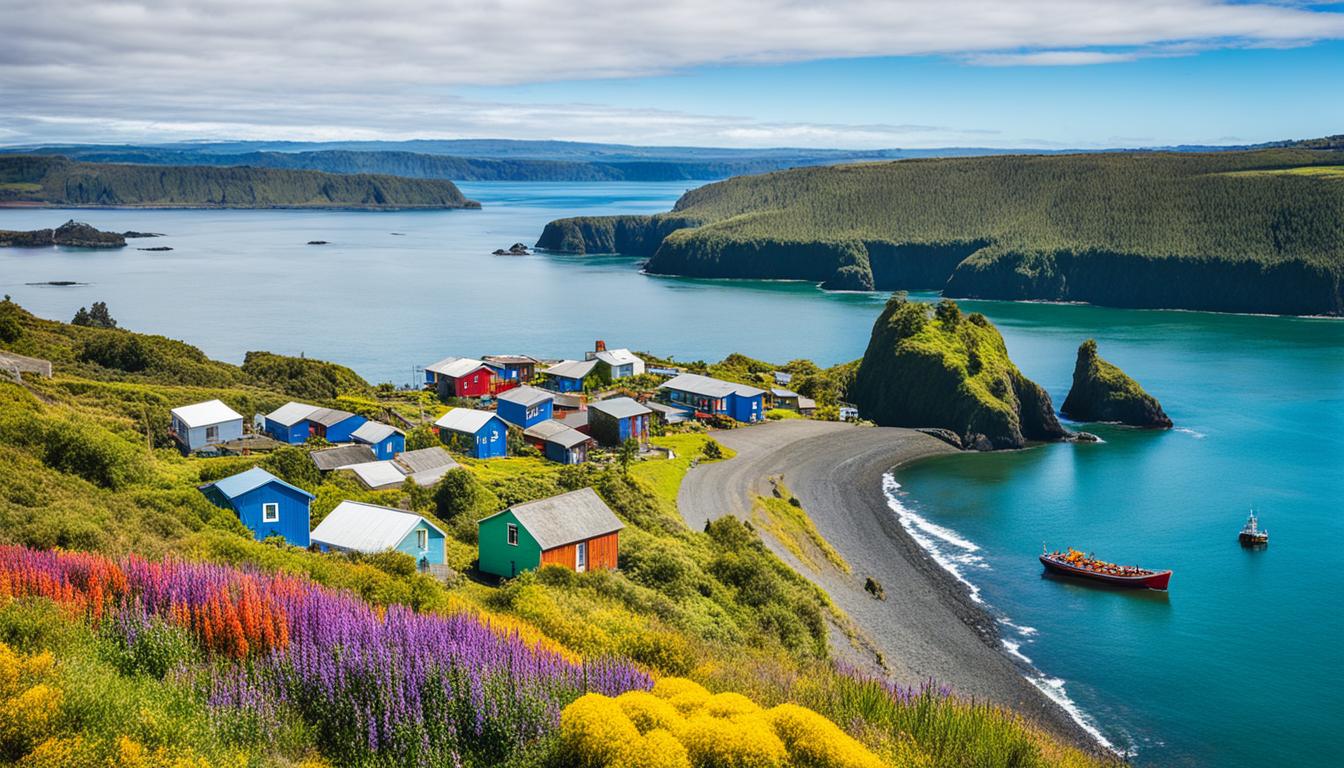✓ Accommodations ✓ Flights ✓ Rental Cars
Chiloé is a magical place off Chile’s southern coast. It’s known for its history, culture, and stunning nature. You can see UNESCO-recognized wooden churches or visit a penguin colony. But there’s more to discover for those who are curious.
Find out the top things to do on Chiloé. See what makes this place truly special.
Key Takeaways
- Chiloé is a 41-island archipelago off the coast of Chile, home to 200,000 residents.
- The island is known for its unique blend of Spanish and indigenous Chilote culture.
- Top attractions include UNESCO-listed wooden churches, a penguin colony, and Chiloé National Park.
- Visitors can enjoy a range of outdoor activities, from trekking to kayaking and birdwatching.
- Chiloé offers a variety of accommodation options, from cozy local stays to luxury hotels.
An Introduction to Chiloé Island
Chiloé’s Unique Culture and History
Chiloé is a special place, made up of 41 islands. It’s far from the Chilean mainland, both in distance and history. The Chono people first lived here, then the Huilliche took over. When the Spanish came in the 1550s, they made Chiloé part of their empire.
But they didn’t pay much attention to it. So, the Spanish settlers and Huilliche lived together, creating a unique Chilote culture and society. This mestizo society kept its traditions alive, even when big changes happened in Latin America in the 19th century.
The Mystical Beauty of the Archipelago
Chiloé is incredibly beautiful, with wild beaches, dense temperate rainforests, rolling hills, and misty valleys. There are many outdoor activities to enjoy, like trekking, horseback riding, kayaking, birdwatching, and whale-watching. You can explore Chiloé’s natural wonders, from penguin colonies on the Islotes de Puñihuil to the flooded forests of the Chepu Valley.
“Chiloé is a world unto itself, isolated from the Chilean mainland by both distance and history.”
Visiting the Penguin Colony at Puñihuil
Chiloé Island is home to a top attraction: the Puñihuil penguin colony. It’s about 45 minutes from Ancud. The Islotes de Puñihuil are a protected area and a national monument. Here, you can join a boat tour to see Humboldt and Magellanic penguins. These two species live together here, which is rare.
Boat Tour to the Penguin Islets
The boat tour lets you see the penguins from the water. You can’t land on the islets. You might also see otters and whales. The Puñihuil wildlife is amazing, showing how these two penguin species live together.
Scenic Drive from Ancud
The drive from Ancud to Puñihuil is beautiful, showing off Chiloé’s best views. The road winds through cliffs, hills, and by the Pacific Ocean. This drive sets the stage for the stunning Puñihuil penguin colony you’ll soon see.
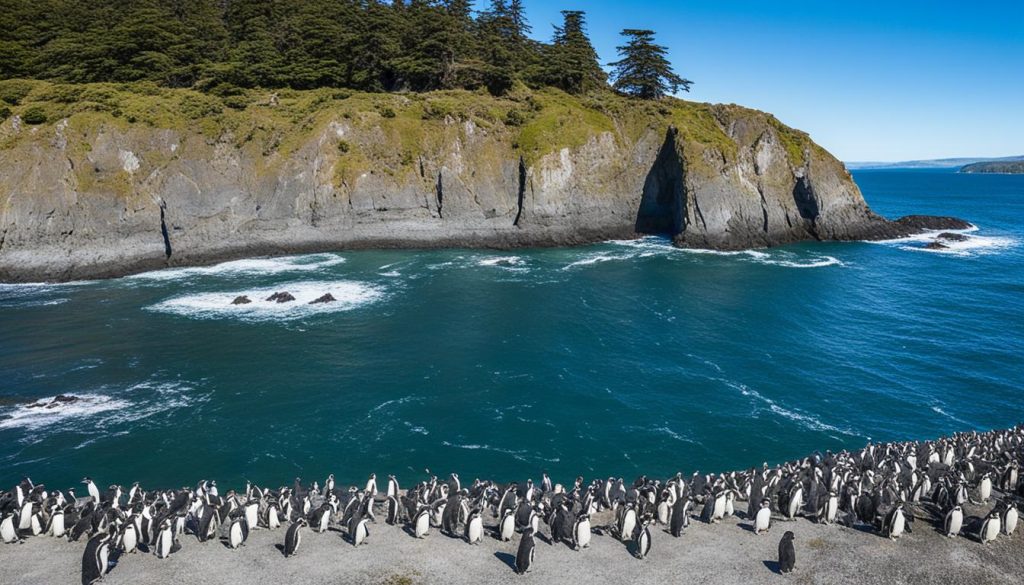
“The boat tour allows visitors to observe the penguins from the water, as landing on the islets is prohibited.”
Exploring Chiloé’s UNESCO Wooden Churches
The Chiloé archipelago is famous for its over 150 wooden churches. These were built by Spanish Jesuit missionaries long ago. Today, sixty of these churches still stand, and sixteen are UNESCO World Heritage sites.
These churches show the island’s deep cultural roots. They mix indigenous and colonial styles in their designs. Local shipbuilders, fishermen, and artisans made these churches. They highlight the creativity and skill of the Chilote people.
Seeing the Chiloé wooden churches is a must for island visitors. They let us peek into the island’s past. We see the spiritual and artistic traditions that have lasted for years.
| Church | Location | Year Built | UNESCO Status |
|---|---|---|---|
| Iglesia de Santa María de Loreto | Achao | 1730 | World Heritage Site |
| Iglesia de San Francisco | Castro | 1859 | World Heritage Site |
| Iglesia de Nuestra Señora de la Luz | Detif | 1880 | World Heritage Site |
| Iglesia de San Antonio | Colo | 1880 | World Heritage Site |
The Chiloé UNESCO churches remind us of the island’s history and the Jesuit missionaries’ legacy. They let visitors experience the beauty and spiritual depth of these unique structures. This helps us understand Chiloé’s special cultural identity.
“The wooden churches of Chiloé stand as a testament to the ingenuity and resilience of the Chilote people, who have preserved this architectural heritage for centuries.”
Achao and Quinchao Island
A short ferry ride from Dalcahue takes you to Quinchao Island. This island is home to several wooden churches recognized by UNESCO. The Iglesia de Santa María de Loreto in Achao is the oldest of these, built in the 18th century. It shows off the island’s culture and the skills of its people with its wooden carvings and curved roof.
The Iglesia de Santa María de Loreto
The Iglesia de Santa María de Loreto is a gem of Chilote architecture. Inside, you’ll see detailed wooden carvings and a unique curved roof. This church reminds us of the cultural traditions that shape Chiloé Island.
Artisanal Markets and Festivals
Achao is famous for its artisanal market, where you can find crafts like woven scarves and woodcarvings. The town celebrates its culture with two festivals in February. These festivals include music, food, and art, offering a deep dive into the Chilote way of life.
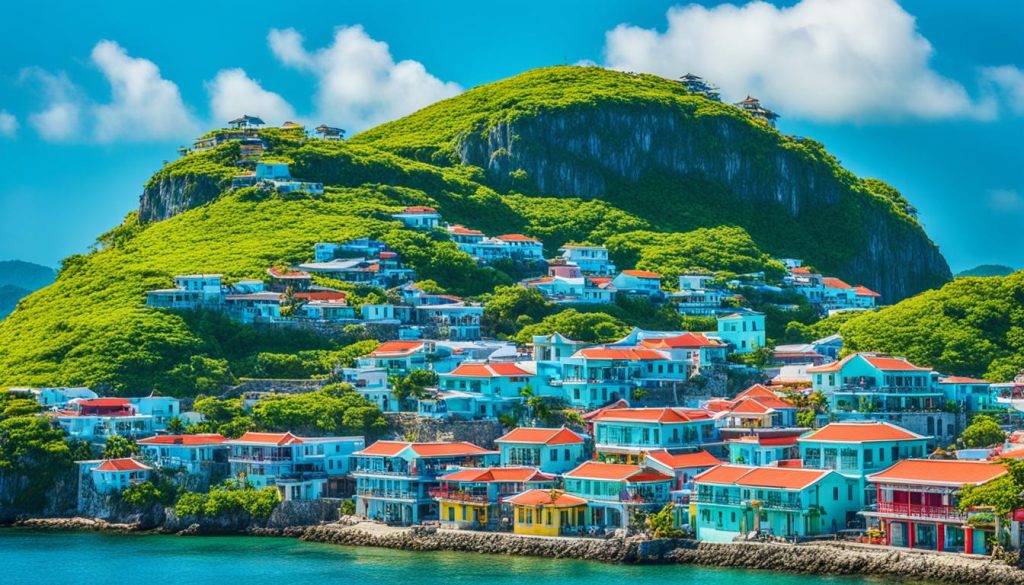
Visiting Quinchao Island and Achao lets you experience the rich culture of the Chiloé Archipelago. You can explore historic churches, markets, or festivals. Each offers a unique look into the island’s cultural heritage.
Chiloé, Chile: Best Things to Do – Top Picks
Chiloé Island is more than just a place to see. It’s a gateway to adventure and discovery. Visitors can hike through the lush Chiloé National Park or search for ancient artifacts on quiet beaches. This island is a magical place for anyone looking for an adventure.
The Chepu Valley is a haven for bird lovers, with over 150 species to spot. For those who love the outdoors, there’s kayaking in calm waters. You can explore the fjords, waterfalls, and stilt houses along the coast.
Food lovers will enjoy trying the Chilote dish of curanto, a delicious stew cooked in a pit. Or, take a leisurely walk through the towns to see the colorful palafito houses on stilts.
Chiloé Island has something for everyone. It’s perfect for those who want to dive into culture, seek adventure, or just relax. This island is a treasure trove of Chiloé’s top attractions, best things to do, and cultural highlights.
“Chiloé offers a perfect blend of natural beauty, cultural richness, and outdoor pursuits that make it a true gem of Chile’s diverse landscapes.”
Hiking in Chiloé National Park
On the western side of Chiloé Island lies the vast Chiloé National Park. It’s a paradise for those who love nature. With 43,000 hectares of Valdivian temperate rainforest, it’s perfect for exploring and spotting wildlife.
Trails and Scenic Beaches
The park has trails for everyone, from easy walks to long treks. A must-see is the hike to Cole Cole Beach, but be ready for a 5-6 hour journey. You might see birds, sea lions, and other Chiloé wildlife along the way.
There’s more to do than just hiking. The park’s beaches, rivers, and lakes are great for relaxing and exploring. Trails like the Sendero El Tepual and Sendero Dunas de Cucao offer unique experiences.
For a deeper adventure, try the 20-kilometer trek to the backcountry refuge at Cole-Cole. No matter which trail you pick, you’ll be amazed by the beauty around you.
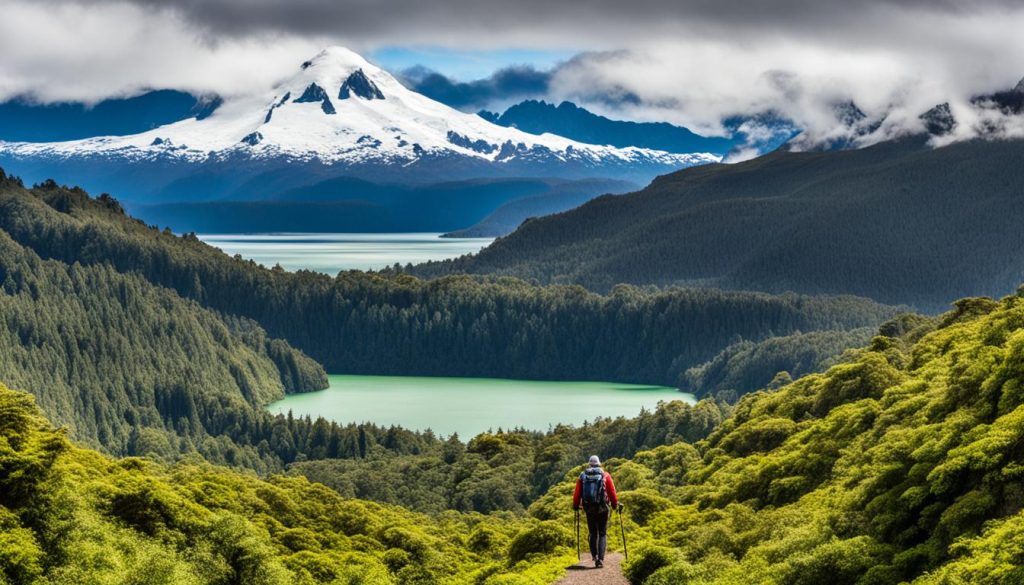
“Chiloé National Park is a vast protected area of Valdivian temperate rainforest, offering visitors a network of hiking trails and scenic beaches to explore.”
Tasting Curanto, the Traditional Chilote Dish
No visit to Chiloé is complete without tasting the island’s famous curanto. This dish is a delicious stew cooked in a pit with hot stones. It’s filled with shellfish, meat, potatoes, and vegetables. The cooking takes up to a day, slowly steaming the ingredients in the juices from the shellfish.
Curanto shows off Chiloé’s unique food heritage. It combines indigenous and colonial tastes into a tasty dish. Visitors can watch how curanto is made and even join in the feast. This lets them dive deep into Chiloé gastronomy.
| Ingredient | Description |
|---|---|
| Shellfish | A variety of fresh seafood like loco (abalone), erizos (sea urchins), machas (razor clams), jaibas (crabs), and ostiones (scallops) |
| Meat | Succulent pork, chicken, and congrio (conger eel) |
| Vegetables | Papas (potatoes), nalca leaves, and other seasonal produce |
Trying curanto is a key Chiloé food experience. It lets you taste the island’s rich food culture. Make sure to try this traditional Chiloé dish when you visit this magical Chilean archipelago.
Birdwatching in the Chepu Valley
The Chepu Valley in the Chiloé Archipelago is perfect for birdwatchers. It’s a wetland created by an earthquake and tsunami in 1960. Here, many bird species live in the flooded forests.
While exploring, you’ll see herons, cormorants, and lots of waterfowl. The area’s beauty lets you enjoy Chiloé’s Chiloé wildlife up close.
Choose from a kayak tour or a guided hike for an amazing Chiloé birdwatching trip. Watch birds move over the calm waters or sit on the greenery. The Chepu Valley is a special place for bird lovers and nature fans.
“The Chepu Valley is a birdwatcher’s paradise, offering a serene and picturesque setting to immerse yourself in Chiloé’s remarkable wildlife.”
Here are tips for a great Chiloé birdwatching trip:
- Bring binoculars or a camera with a long lens for great photos of the birds.
- Dress in comfortable, neutral colors to not scare the birds.
- Be ready for the weather, as it can be sunny, windy, or rainy in the Chepu Valley.
- Talk to local guides or bird experts to see rare birds.
Experience the peaceful beauty of the Chepu Valley. See the Chiloé wetlands full of life. This place is a dream for nature lovers and birdwatchers.
Where to Stay on Chiloé
Chiloé is a magical archipelago off Chile’s southern coast. It has many places to stay for every traveler. You can choose from nature escapes or cultural experiences. The main towns, Ancud and Castro, are great for exploring this unique place.
Ancud: Closer to Nature
Ancud is on Chiloé’s northern coast. It’s perfect for those who love nature. You can find hostels, hotels, and cabins with amazing ocean views here. It’s close to the Puñihuil penguin colony and Chiloé National Park.
Castro: Cultural Hub
Castro is Chiloé’s cultural center. It has many Chiloé hotels and unique spots. You can stay in cozy hostels, charming B&Bs, or hotels with beautiful waterfront views. It’s a great spot to see the island’s wooden churches and palafitos.
Choosing Ancud or Castro means you’re set to explore Chiloé‘s wonders. With many Chiloé accommodation choices, everyone can find a place that fits their budget and style. The island guarantees an unforgettable trip for all visitors.
Getting to Chiloé Island
Chiloé Island is a magical place in southern Chile. You can get there by air or sea. The main airport is in Castro, with flights from Santiago and other big cities in Chile. Or, you can take a ferry from Pargua, near Puerto Montt, which takes about 30 to 40 minutes.
Once you’re on the island, you can get around by bus or renting a car. This lets you see the archipelago at your own speed. Renting a car and taking it on the ferry costs $16 (£11) one-way. Buses go from Puerto Montt, Puerto Varas, Santiago, and Punta Arenas to places like Ancud, Castro, and Quellón. The trip from Santiago takes about 15 hours.
| Transportation Mode | Details |
|---|---|
| Flights | Chiloé’s main airport is located in Castro, with regular flights from Santiago and other major Chilean cities. |
| Ferries | The ferry from the mainland town of Pargua to Chiloé takes 30 to 40 minutes. The cost for renting a car and taking it on the ferry is $16 (£11) one-way. |
| Buses | Several bus companies operate trips to Ancud, Castro, and Quellón from Puerto Montt, Puerto Varas, Santiago, and Punta Arenas, with the journey from Santiago taking approximately 15 hours. |
| Rental Cars | Rental car services are available in Castro, allowing visitors to explore the island at their convenience. |
Chiloé Island has itineraries for 1 to 4 days. You can see the UNESCO-recognized wooden churches, go on a scenic drive, or dive into the local culture. Getting around is easy and fun, making your visit enjoyable.
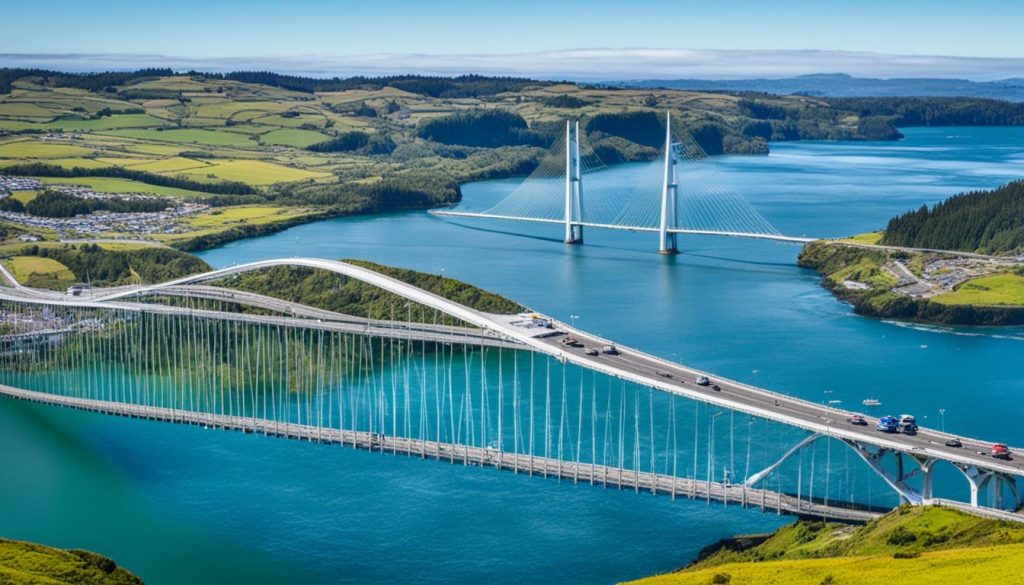
Conclusion
Chiloé, Chile, is a place full of culture, beauty, and unforgettable moments. It has enchanting wooden churches and mesmerizing penguin colonies. This island archipelago is a treasure trove for adventurous travelers.
If you’re looking for an adventure or a peaceful trip, Chiloé has something for you. Dive into the Chilote culture, explore lush national parks, and taste the local cuisine. Chiloé’s beautiful landscapes, rich history, and friendly people make it a top spot in Chile.
When planning your trip to Chiloé, get ready for an adventure. Whether you’re driving the Carretera Austral or hopping between islands, the memories you make will last a lifetime. Chiloé is a magical place that will leave a mark on your heart.
FAQ
What are the top attractions and things to do in Chiloé, Chile?
What is unique about the culture and history of Chiloé?
How can I see the penguins at Puñihuil?
What are the UNESCO-recognized wooden churches in Chiloé?
What can I do on Quinchao Island?
What outdoor activities are available in Chiloé National Park?
What is curanto, and how can I try it?
Where should I stay on Chiloé, and what are the accommodation options?
How do I get to Chiloé Island?
The above is subject to change.
Check back often to TRAVEL.COM for the latest travel tips and deals.
